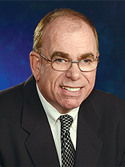
Ask skilled care or senior living operators about their biggest operational challenge, and the answer is almost always the same: keeping the place full.
It’s not hard to see why. In these uber competitive times, a single resident can spell the difference between success and failure. But a new investigation of the way many operators deal with prospects shows that there’s a lot of room for improvement.
For more than a decade, students learning about senior housing administration at George Mason University have been “mystery shopping” operators via phone calls. The latest results are just in. And believe me, they are nothing to call home about.
Here’s what our mystery callers experienced:
- They were asked for their name only 62% of the time
- They were asked for their move-in timeline only 26% of the time
- They were asked about their ability to pay less than one-third (32%) of the time
- They were offered a brochure by mail (rather than a tour invitation) 21% of the time.
To Andrew Carle, who runs the senior housing program at George Mason, these less-than-optimal practices translate to lost opportunity. He noted that a single move-in can represent a sale of more than $100,000.
“This is the equivalent of two Mercedes’ autos, yet sales performance on these shops fall far below a purchase of this value, let alone one involving the housing and care of a senior,” he noted.
Carle also offered some common sense ways communities can improve their odds: answer calls within three rings, ask the name of the caller, ask the age of the potential resident, provide an overview of the community and request a tour. You’d think operators would be doing this as a matter of practice. Clearly, many are not.
My view is that what’s really needed is a change in perspective. Operators in this field clearly need to start behaving more like marketers. But not just like any marketers. We’re talking world-class marketers.
I know what you’re thinking: Okay Mister Smartypants, what do world-class marketers do differently? Funny you should ask. As it turns out, this exact question was recently tackled in a joint Marketing2020 study by EffectiveBrands and the Association of National Advertisers.
After examining more than 10,000 marketers across 92 nations, they found that the best of the best distinguished themselves from the pack in three distinct ways:
First, they were better at integrating data about what customers are doing with an understanding of why they are doing it. Second, they communicated a brand purpose (its functional, emotional, and societal payoffs). Finally, they delivered a “total experience” to their customers.
Yes, I realize those three objectives are easier said than done. In fact, very few companies in the study were able to do them all.
But imagine if your organization could. Chances are you’d be spending a lot less time wondering why full occupancy is such a mystery.
John O’Connor is the Editorial Director at McKnight’s.




